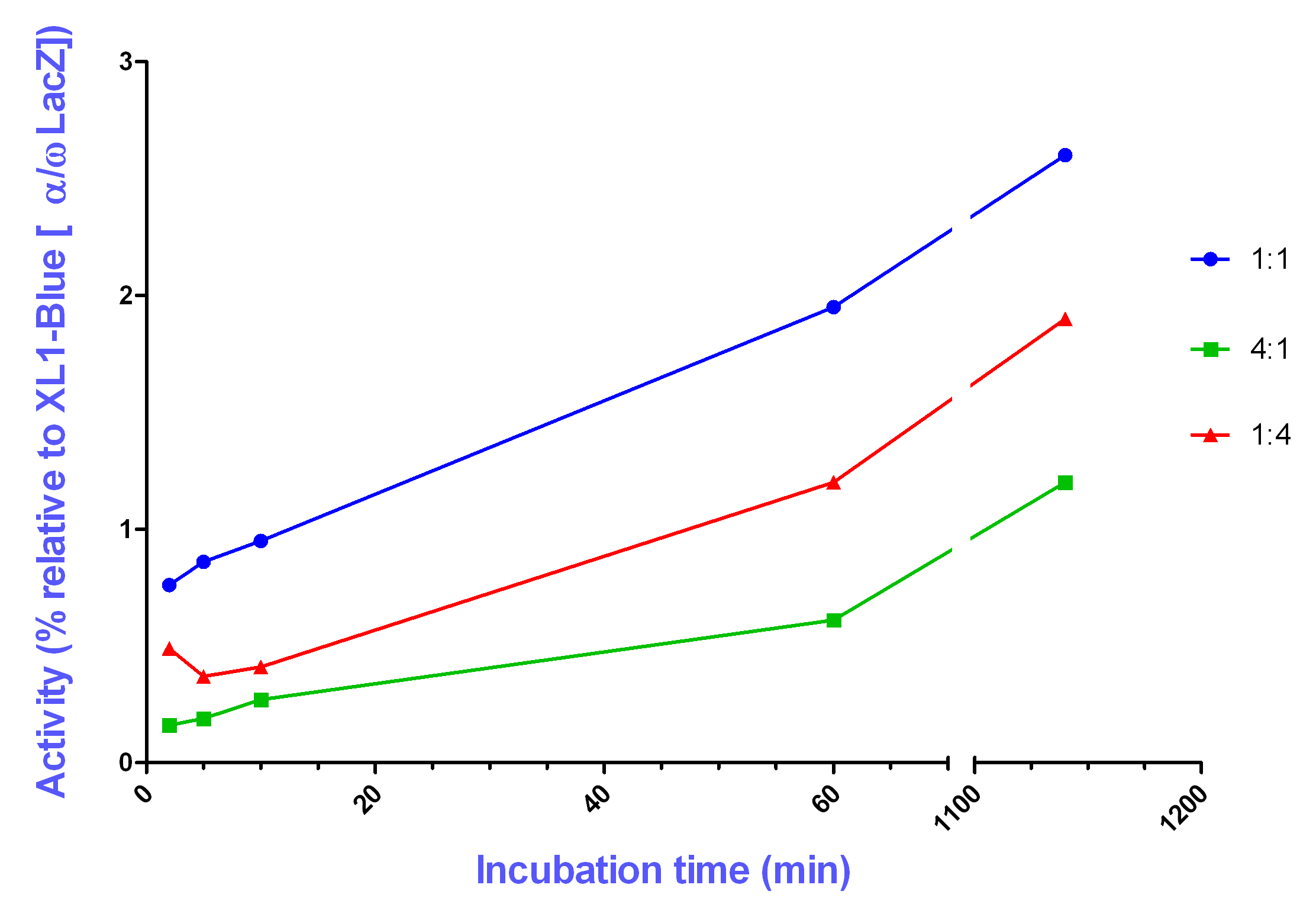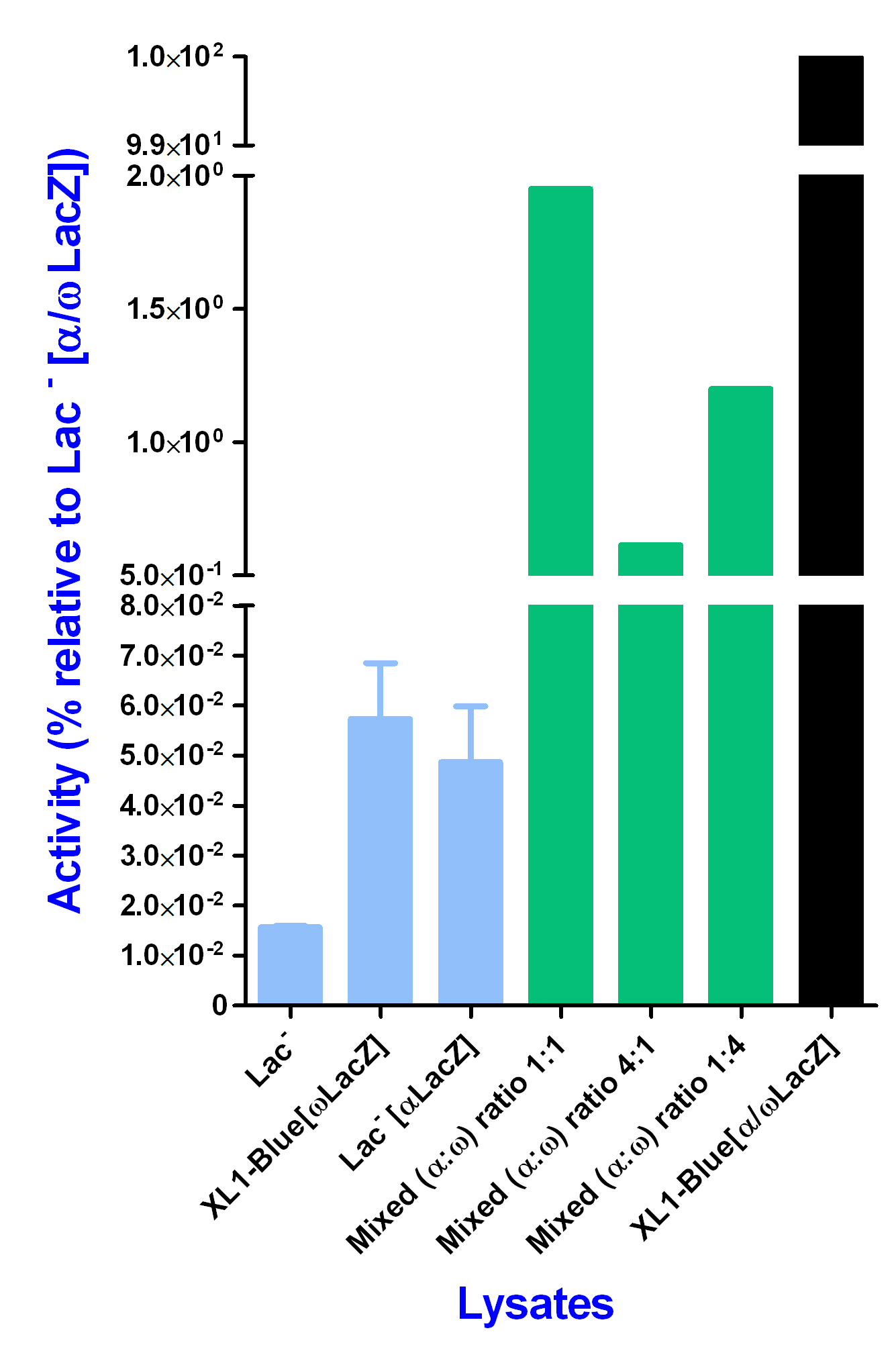Team:Aberdeen Scotland/WetLab/betagalactosidaseassay
From 2009.igem.org
University of Aberdeen - Pico Plumber
Contents |
Introduction
The idea of our iGEM project involves the production of a two - component glue. When the bacterias, i.e. Eschericha coli, detect a leak in a pipe, this triggers the transcription of two genes, the 2 components of the glue. The adhesive, tropoelastin, will be expressed within the cell plasma, The enzyme lysyl oxidase, however, will be expressed on the cell surface by translational fusion with the outer membrane protein OmpX. This enzyme functions as adhesive hardener. Once the cell reaches the leak, it lyses and hence both glue components are mixed and start functioning as glue, thereby healing the pipe.
The following experiments were done in order to prove that the concept of mixing two components in vitro results in a functional enzyme / protein. This was shown by using the example of alpha and omega complementation of beta-Galactosidase activity. Beta-Galactosidase consists of an alpha and an omega portion, encoded by LacZ. It functions when both portions are reconstituted and its activity can be detected with a beta-Galactosidase assay.
Methods
E.coli strains:
The XL1-Blue strain, usually used for Blue-White screening, expresses the ω portion of LacZ, referred to as XL1-Blue[ωLacZ]. The Lac- strain was transformed with the plasmid pRS425, which has the gene for the α portion of β-Galactosidase. This is refered to as Lac-[αLacZ]. As positive control the plasmid pRS425 was also transformed into the XL1-Blue strain, therefore this strain now encodes for both portions of β-Galactosidase and the two portions are reconstituted within cell environment (XL1-Blue[α/ωLacZ]).
Sonication:
Results
The activity gained by in vivo reconstitution of the alpha and omega subunit inside the XL1-Blue{alpha/omegaLacZ} strain was said to be the maximum achievable and therefroe said to be 100% activity. All the other activities when given in percentage are compared to this maximum of activity.
Generally, an increased enzymatic activity is achieved with increasing incubation time which allows the two components, alpha and omega, to be built together. Measurements were taken at an incubation time of 2 minutes, 5 minutes, 10 minutes, 60 minutes, and 19 hours. However, the activity is higher for a mixing ration of 1:1 (alpha to omega) than for the other ratios (4:1 and 1:4).
Never the less, at an incubation time of 60 minutes all three different ratios gave a significant higher activity in comparison with the negative ontrols, but much less activity than the in vivo reconstitution of the alpha and omega subunit.
Conclusion
It was demonstrated that in vivo reconstitution of a protein results in functionality of a protein. In this particular case, the alpha and omega subunit of beta-Galactosidase was combined outside cellular environment, thereby regaining enzyme activity.
The results suggest that the most effective reconstitution is achieved by mixing the alpha and omega portion in a 1:1 ratio. A ration of 4:1 (alpha to omega) has result in the lowest enzyme activity. However, in comparison to the in vivo reconstitution the achieved enzymatic activity is very low. It might be possible that different buffer conditions will raise the activity of the in vitro reconstitution further, and closer to the in vivo one. Up until the last measurement at an incubation time of 19 hours, the enzyme activity increased during the incubation time. This demonstrates that the two components need a certain time to be built together. However, it is expected that after a prolonged time the activity decreases agian due to protein degradation.
This experiment has shown that the concept of the 2-component glue works. It was successfully demonstrated that the mixing of two subunits of an enzyme outside cellular environment results in the reconstitution of its function.
 Back to Quorum Sensing Results Back to Quorum Sensing Results
|
Continue to Wet Lab Procedures 
|
 "
"

